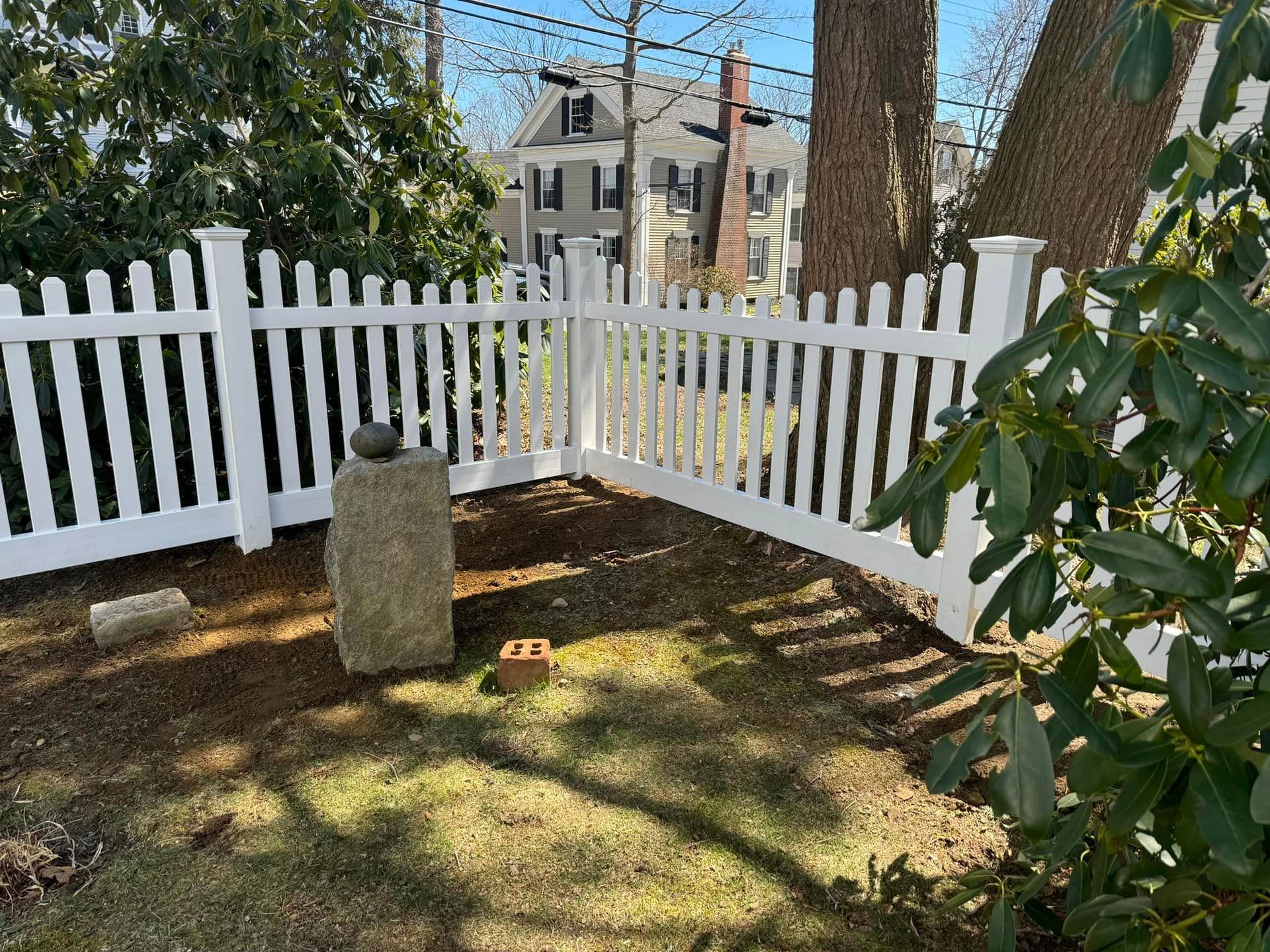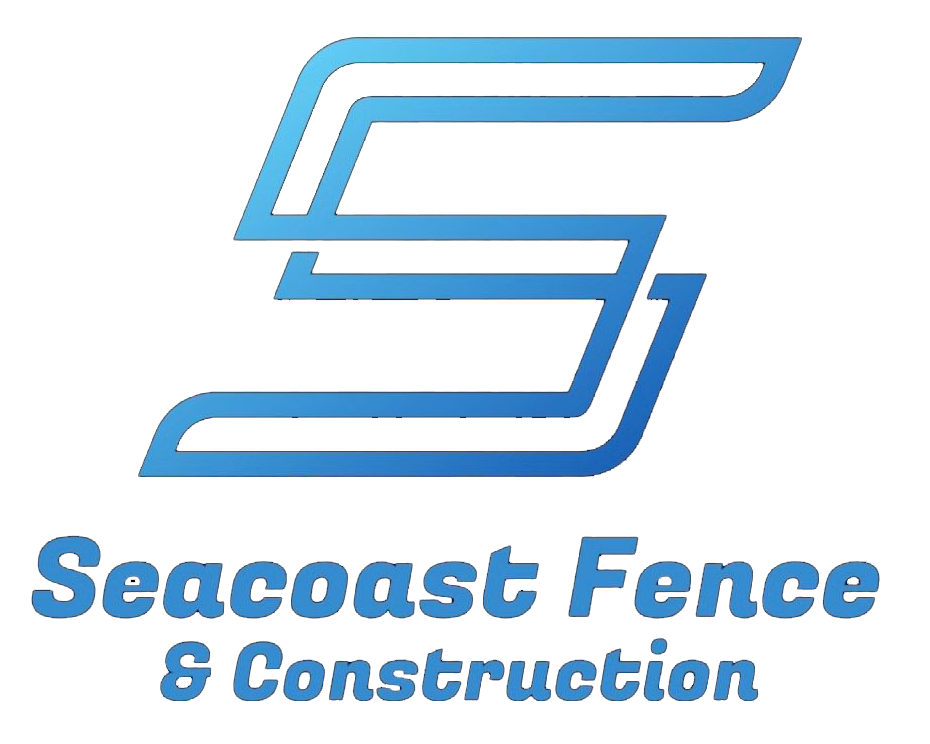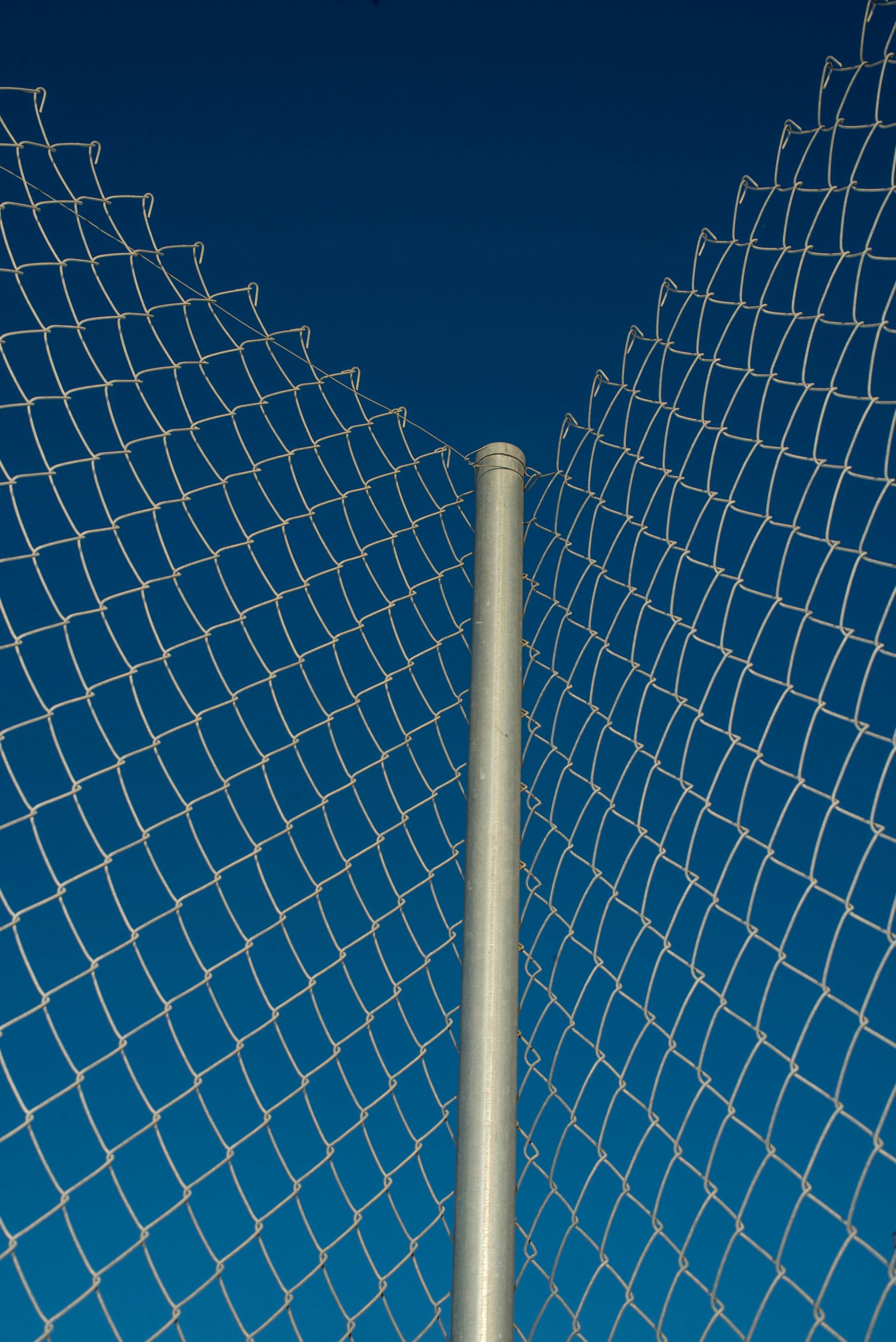Call Us: (207)-415-0219
Ultimate Guide to Fence Installation and Repair Services

The Ultimate Guide to Fence Installation and Repair Services
Welcome to our comprehensive guide on fencing services. Whether you're looking to enhance your home's security, privacy, or aesthetic appeal, a well-chosen fence can make all the difference. This guide covers everything you need to know about fence installation, repair, wood fencing, and chain link fencing. Let's get started!
Fence Installation: Everything You Need to Know
Installing a fence is a significant investment in your property. It provides security, privacy, and can even boost curb appeal. Here’s what you need to know about fence installation.
Types of Fences for Installation
There are various types of fences you can install, each serving different purposes. Here's a quick overview:
- Wood Fences: Classic and versatile, wood fences offer a natural look and can be customized to any style.
- Chain Link Fences: Durable and cost-effective, ideal for security purposes.
- Vinyl Fences: Low maintenance and available in various styles and colors.
- Aluminum Fences: Elegant and rust-resistant, perfect for decorative purposes.
For more details on comparing these options, check out our Complete Fence Installation Guide (coming soon).
Step-by-Step Fence Installation Process
Installing a fence involves several steps:
- Planning and Permits: Before you start, check local regulations and obtain necessary permits.
- Materials and Tools Needed: Ensure you have all the materials and tools required for the job.
- Marking and Digging Post Holes: Mark the fence line and dig post holes to the correct depth.
- Setting Posts and Rails: Set the posts in concrete and attach the rails.
- Installing Fence Panels: Attach the fence panels or boards to the rails.
- Finishing Touches: Add any finishing touches, like paint or sealant, to protect your fence.
Cost of Fence Installation
The cost of installing a fence varies based on several factors:
- Material: Wood, vinyl, chain link, and aluminum all have different price points.
- Length and Height: The larger the fence, the more it will cost.
- Location: Costs can vary based on your location and local labor rates.
On average, expect to pay between $1,500 and $4,000 for a typical residential fence installation.
Benefits of Professional Fence Installation
While DIY installation is possible, hiring a professional has several benefits:
- Quality and Durability: Professionals ensure the fence is installed correctly and will last longer.
- Time and Effort Savings: Save yourself the time and physical effort involved in installing a fence.
- Warranty and Maintenance: Many professionals offer warranties and maintenance services, providing peace of mind.
Comprehensive Guide to Fence Repair
Over time, fences can suffer from wear and tear, damage, or weathering. Proper repair and maintenance can extend the life of your fence and keep it looking its best.
Common Fence Problems
Fences can encounter several common issues:
- Rotting Wood: Wood fences are susceptible to rot, especially in wet climates.
- Broken or Missing Pickets: Individual pickets can break or go missing due to impact or weather.
- Leaning or Sagging Fence: Fences can lean or sag if the posts are not set correctly or the soil shifts.
- Rusted Chain Link: Chain link fences can rust over time, especially in humid or coastal areas.
- Loose Posts: Fence posts can become loose, affecting the stability of the entire fence.
DIY vs. Professional Fence Repair
Deciding whether to repair your fence yourself or hire a professional depends on the extent of the damage and your comfort level with DIY projects.
- DIY Repairs: Small repairs, like replacing a broken picket or tightening a loose post, can be handled by most homeowners.
- Professional Repairs: For more extensive damage, such as repairing a leaning fence or replacing multiple sections, it’s best to call a professional.
Fence Repair Costs
Repair costs vary depending on the material and extent of the damage:
- Wood Fences: Repairing a wooden fence can cost between $150 and $500, depending on the damage.
- Chain Link Fences: Chain link repairs typically cost between $100 and $300.
- Vinyl and Aluminum Fences: These can be more expensive to repair, ranging from $200 to $600.
For a more detailed cost breakdown, visit our Fence Repair Cost Guide.
Preventive Maintenance Tips
Regular maintenance can help prevent many common fence problems:
- Regular Inspections: Check your fence regularly for signs of damage or wear.
- Cleaning and Sealing: Clean your fence periodically and apply a sealant to protect it from the elements.
- Prompt Repairs: Address small issues immediately to prevent them from becoming bigger problems.
For more maintenance tips, see our Top 10 Maintenance Tips for Your Fences (coming soon).
A Deep Dive into Wood Fencing
Wood fencing remains a popular choice for many homeowners due to its natural beauty and versatility. This section explores the different types of wood fences, their benefits, and maintenance tips.
Types of Wood Fences
There are several types of wood fences to consider:
- Picket Fences: Ideal for decorative purposes, providing a classic look.
- Privacy Fences: Tall fences that offer seclusion from neighbors and street traffic.
- Split Rail Fences: Typically used for larger properties or rustic settings.
- Lattice Fences: Adds a decorative touch and can be used for climbing plants.
For more details on each type, check out our Everything About Wood Fences (coming soon).
Pros and Cons of Wood Fencing
Wood fences have several advantages and a few drawbacks:
- Pros:
- Aesthetics: Wood offers a natural and customizable look.
- Versatility: Can be painted or stained to match any style.
- Eco-Friendly: Wood is a renewable resource.
- Cons:
- Maintenance: Requires regular upkeep to prevent rot and weathering.
- Durability: Not as long-lasting as some other materials without proper care.
- Cost: Can be more expensive than other fencing options over time due to maintenance needs.
Choosing the Right Wood for Your Fence
Different types of wood have unique characteristics:
- Cedar: Naturally resistant to insects and rot, with a beautiful grain.
- Pine: Affordable and widely available, but needs to be treated for durability.
- Redwood: Premium wood known for its strength and rich color.
- Pressure-Treated Wood: Treated to resist insects and decay, often more affordable.
For a deeper dive into choosing wood, visit our Everything About Wood Fences (coming soon).
Wood Fence Installation and Maintenance
Installing and maintaining a wood fence involves several steps:
- Installation Tips:
- Ensure posts are set deep enough to provide stability.
- Use quality materials to prolong the life of your fence.
- Consider hiring a professional for best results.
- Maintenance Routines:
- Staining and Sealing: Apply a stain or sealant every 2-3 years to protect the wood.
- Cleaning: Regularly clean the fence to remove dirt and prevent mold growth.
- Inspections: Check for and repair any damage, such as loose boards or rot.
For detailed installation and maintenance advice, see our Everything About Wood Fences (coming soon).
Cost of Wood Fencing
Several factors affect the cost of wood fencing:
- Type of Wood: Cedar and redwood are more expensive than pine or pressure-treated wood.
- Fence Style: Privacy fences cost more than picket or split rail fences.
- Installation Costs: Professional installation can add to the overall cost.
On average, wood fencing costs between $1,500 and $4,000, depending on these factors.
All About Chain Link Fencing
Chain link fencing is a practical and cost-effective option for many homeowners. It offers durability and security without breaking the bank. Let's explore the various aspects of chain link fencing.
Types of Chain Link Fences
There are two main types of chain link fences to consider:
- Galvanized Chain Link: Coated with a layer of zinc to prevent rust and corrosion. It's the most common type and offers long-lasting durability.
- Vinyl-Coated Chain Link: Comes with an additional layer of vinyl for extra protection and aesthetic appeal. Available in various colors, it blends better with landscaping.
For a more detailed comparison, check out our Detailed Guide on Chain Link Fencing (coming soon).
Pros and Cons of Chain Link Fencing
Chain link fences come with several advantages and a few drawbacks:
- Pros:
- Durability: Strong and resistant to damage, ideal for security.
- Cost-Effectiveness: One of the most affordable fencing options.
- Low Maintenance: Requires minimal upkeep compared to other materials.
- Cons:
- Aesthetics: Less visually appealing than wood or vinyl fences.
- Privacy: Provides little privacy unless fitted with privacy slats.
Chain Link Fence Installation
Installing a chain link fence is straightforward but requires some specific steps:
Installation Process
- Planning and Permits: Check local regulations and obtain any required permits.
- Materials and Tools: Gather all necessary materials and tools, including posts, rails, and fencing fabric.
- Marking and Digging Post Holes: Mark the fence line and dig post holes at the correct depth.
- Setting Posts and Rails: Set the posts in concrete and attach the rails.
- Attaching Fencing Fabric: Unroll the chain link fabric and attach it to the posts and rails.
- Tensioning and Finishing: Tighten the fabric and secure it properly.
For more detailed instructions, visit our Detailed Guide on Chain Link Fencing (coming soon).
Maintenance and Repair of Chain Link Fences
While chain link fences are low maintenance, they still require some care:
Routine Maintenance
- Cleaning: Wash the fence periodically to remove dirt and prevent rust.
- Rust Prevention: Inspect for rust and apply rust-preventive paint as needed.
- Minor Repairs: Fix any bent or damaged sections promptly to maintain integrity.
Cost of Chain Link Fencing
The cost of chain link fencing varies based on several factors:
- Height: Taller fences cost more due to additional materials.
- Length: Longer fences require more materials, increasing the overall cost.
- Coating: Vinyl-coated chain link fences are more expensive than galvanized ones.
On average, chain link fencing costs between $1,000 and $3,000, depending on these factors.
Conclusion
Selecting the right fence is key to enhancing your property's security, privacy, and aesthetics. This guide has provided comprehensive insights into fence installation, repair, wood fencing, and chain link fencing, helping you make informed decisions. Regular maintenance and timely repairs can significantly extend the life of your fence, ensuring it remains durable and attractive.
Call to Action
For top-quality fencing services in Biddeford, ME, trust Seacoast Fence and Construction. They specialize in fence installation, repair, wood fencing, and chain link fencing for both residential and commercial properties. Seacoast Fence and Construction is known for their meticulous approach, high-quality materials, and commitment to customer satisfaction.
Contact Seacoast Fence and Construction today to transform your property with a beautiful, durable fence that enhances security and curb appeal. Experience the professionalism and excellence that make them a leader in the local fencing industry.
Frequently Asked Questions
What is the best type of fencing for security?
For security, chain link fences are a popular choice due to their durability and strength. However, if privacy is also a concern, a tall wood or vinyl privacy fence can offer both security and seclusion. Additionally, adding features like pointed tops or electric wiring can enhance security further.
How long does a wood fence last?
A well-maintained wood fence can last anywhere from 15 to 20 years. The longevity depends on the type of wood used and the level of maintenance it receives. Regular staining, sealing, and repairs can extend the lifespan of a wood fence significantly.
Can I install a fence myself?
Yes, installing a fence yourself is possible, especially if you have some DIY experience. However, it's a labor-intensive process that requires proper planning, tools, and knowledge of local regulations. For complex installations or to ensure longevity, hiring a professional is often recommended.
How often should I repaint or stain my wood fence?
To keep a wood fence in good condition, you should repaint or stain it every 2 to 3 years. This helps protect the wood from weathering, rot, and insect damage. Regular maintenance also keeps the fence looking fresh and new.
What permits are required for fence installation?
Permit requirements for fence installation vary by location. Typically, you’ll need to check with your local municipality or homeowners' association for specific regulations and permits. Failure to obtain the necessary permits can result in fines or having to remove the fence.
How do I choose the right fence for my property?
Choosing the right fence depends on your needs and preferences. Consider the purpose of the fence: security, privacy, aesthetic appeal, or pet containment. Also, factor in your budget, maintenance requirements, and the style of your home and landscape.
Our Services
Contact Information
Phone:
Address:
642 Elm St Unit 3, Biddeford ME 4005
Business Hours
- Mon - Fri
- -
- Sat - Sun
- Closed
Tips & Articles


